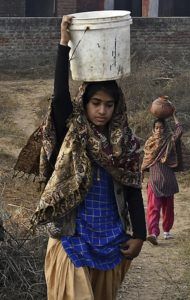Sanjay G. Reddy in The Print:
 In recent years, a debate has raged in India on what is the level of poverty in the country and whether it has changed, either to reflect the arrival of a new India or the persistence of an old one. Prime Minister Narendra Modi’s government stopped producing official estimates of poverty when it abolished the storied 65-year-old Planning Commission.
In recent years, a debate has raged in India on what is the level of poverty in the country and whether it has changed, either to reflect the arrival of a new India or the persistence of an old one. Prime Minister Narendra Modi’s government stopped producing official estimates of poverty when it abolished the storied 65-year-old Planning Commission.
This has, however, only cemented the impression that the debate on poverty estimates has become something of a free-for-all.
The official estimates on poverty, and most of the debate, both in recent years and much earlier, have focused on the total quantity of the goods, including food, clothing and other essentials of life, consumed by ordinary Indians. But it has long been understood that this is only a part of the picture of poverty in a country. The well-being of a person is shaped by multiple factors, including whether she is healthy, educated, has access to clean water and surroundings, and has social acceptance.
The current government, like previous ones, has recognised this through various initiatives (for example, through the Swachh Bharat Abhiyan or more recently, the Ayushman Bharat). These may be a case of well-packaged more than well-thought out, but they are at least nominally aimed to deliver social services and to improve the conditions of life. It is, therefore, of interest and importance to ask whether well-being in these various aspects has improved over substantial lengths of time, especially for the most deprived.
It is this issue that has been addressed by the newly released “multidimensional” poverty estimates for India by the United Nations Development Programme (UNDP).
More here.
